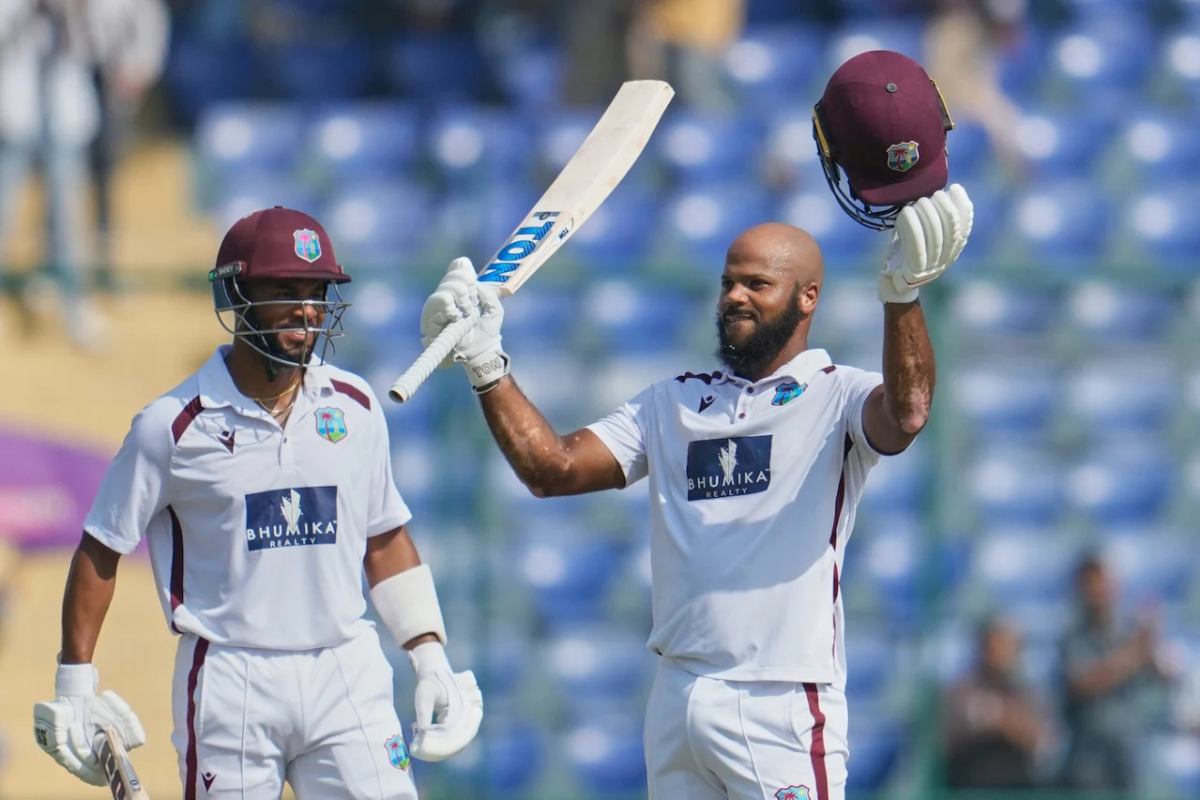
India’s decision to enforce the follow-on in the second Test against West Indies came under scrutiny after the visitors produced a spirited comeback.

India’s bold decision to enforce the follow-on against West Indies has drawn criticism after the visitors mounted an inspiring fightback on Day 4 of the second Test. Despite taking a massive 270-run first innings lead, the hosts, who dominated the series until then, found themselves under pressure as the West Indies bounced back strongly.
In the second Test, the script looked very similar early on. Opting to bat, India piled up 518/5 in the first innings and then skittled out the West Indies for 248. Confident of wrapping up the Test early, captain Gill and coach Gautam Gambhir decided to send them back in. The move that initially looked justified as the Roston Chase-led side were reeling at 35/2 in the 15th over.
However, the pitch had already begun to lose its bite, got slower, and offered less bounce. John Campbell displayed resilience and grit against India’s spin trio. What followed was a spirited fightback from the Windies duo, leaving India to rue their decision in hindsight. The duo added a resilient 177-run stand off 295 balls that wiped out the deficit and frustrated India bowlers and the captain.
Campbell led the charge with a superb 115 off 199 balls, laced with 12 fours and three sixes. His innings carried historical significance as Campbell became the first West Indies opener to score a Test hundred in India in 23 years, since Wavell Hinds’ 100 at Eden Gardens in 2002. The left-hander also became the first Windies opener to score a ton against India since Daren Ganga, who amassed 135 in Basseterre in 2006. Hope (103 off 214) followed suit to notch up a century, achieving a milestone after 2967 days.
However, Indian bowlers then made a remarkable comeback, claiming seven wickets for 99 runs. But India once again had to work hard for the last wicket. West Indies’ second innings came to an end for 390, the second-highest by a visiting team in India since 2013.
ALSO READ:
However, this isn’t the first time India has had to witness a fightback from the opposition after the follow-on enforcement. Indian skipper’s decision to wrap up things quickly didn’t pay off as India had to bowl over 200 overs on the trot, 81.5 in the first innings and 118.5 in the next. That’s over two days of bowling in test cricket. The long West Indies innings not only tired India’s bowling attack, where Nitish Kumar Reddy wasn’t used at all. Notably, Yashasvi Jaiswal bowled one over, the last over of Day 3.
Adding to the frustration, India’s fielding setup and bowling tactics came under scrutiny during the last wicket partnership between No. 11 batter Jayden Seales and Justin Greaves, who stitched 69 runs. Teams generally put fielders on the boundary line for a recognised batter when he bats with a tail-ender, but there were no close-in fielders for the No. 11 batter as well.
In hindsight, batting again and setting improbable targets might have been a safer option, especially for workload management, given most of the bowlers will be traveling to Australia for the white-ball series, starting in less than six days. The first ODI of the three-match series against Australia begins on October 19, Sunday.
This marked only the fourth instance of India being forced to bat again after enforcing the follow-on, a reminder that even if you have dominated the match, you can’t rule out the opposition and should consider the situation, time left, and mainly the bowler’s workload, and not just the scorecard.
For more updates, follow CricXtasy on Facebook, Instagram, Twitter, and YouTube.